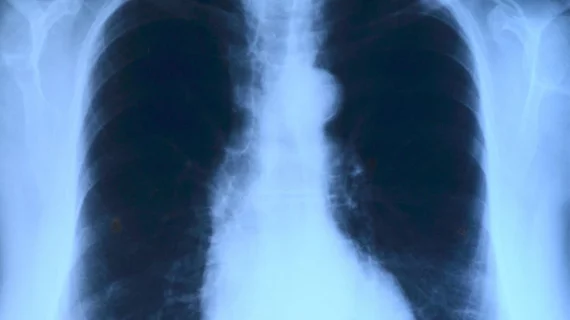Researchers have trained an AI system to interpret and prioritize chest X-rays based on urgent and critical findings, according to a study published in Radiology.
The AI system was able to distinguish between abnormal and normal chest x-rays with “high accuracy,” and its critical findings were received by an expert radiologist opinion in 2.7 days on average. That beats out the 11.2 days average at an actual practice. The newly-developed system could possibly be used to automatically triage chest x-ray images, something that hasn’t been available for radiologists, according to Giovanni Montana, PhD, study co-author and University of Warwick professor.
"Currently there are no systematic and automated ways to triage chest X-rays and bring those with critical and urgent findings to the top of the reporting pile," Montana said in a statement.
Many radiologists believe that deep-learning technology could be a valuable tool in improving workflow and workforce efficiency issues. The issues can lead to large backlogs of reports, according to the study. Researchers developed and tested the AI system that could interpret and prioritize adult chest x-rays with critical findings in an effort to reduce exam backlogs and provide quicker care to patients.
The system was developed using a dataset of more than 470,300 deidentified adult chest x-rays collected from 2007 to 2017. The radiology reports were then preprocessed with an in-house natural language processing (NLP) system, which prioritized the images as critical, urgent, nonurgent or normal. Researchers then trained an AI system for computer vision with labeled x-ray images to predict their clinical priority based on appearance. The system’s ability to prioritize was then tested on an independent dataset of more than 15,800 images.
According to the study, the system was able to detect normal chest x-rays with a sensitivity of 71 percent, specificity of 95 percent, positive predictive value (PPV) of 73 percent, and negative predictive value (NPV) of 99 percent.
"The initial results reported here are exciting as they demonstrate that an AI system can be successfully trained using a very large database of routinely acquired radiologic data," Montana said in a statement. "With further clinical validation, this technology is expected to reduce a radiologist's workload by a significant amount by detecting all the normal exams so more time can be spent on those requiring more attention."

